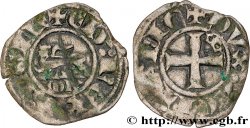Live auction - fme_400041 - III REPUBLIC Médaille de l’association Polytechnique
You must signin and be an approved bidder to bid, LOGIN TO BID. Accounts are subject to approval and the approval process takes place within 48 hours. Do not wait until the day a sale closes to register. Clicking on "BID" constitutes acceptance of the terms of use of cgb.fr private live auctions.
Bids must be placed in whole Euro amounts only. The sale will start closing at the time stated on the item description; any bids received at the site after the closing time will not be executed. Transmission times may vary and bids could be rejected if you wait until the last second. For further information check the Live auction FAQ
All winning bids are subject to a 18% buyer’s fee.
All winning bids are subject to a 18% buyer’s fee.
| Estimate : | 60 € |
| Price : | no bid |
| Maximum bid : | no bid |
| End of the sale : | 14 November 2023 17:06:51 |
Type : Médaille de l’association Polytechnique
Date: 1879
Mint name / Town : 75 - Paris
Metal : bronze
Diameter : 51 mm
Orientation dies : 12 h.
Engraver BRENET Nicolas-Guy-Antoine (1773-1846)
Weight : 61 g.
Edge : lisse + triangle BRONZE
Coments on the condition:
Belle médaille, mais avec des traces d’astiquage. Patine rougeâtre
Obverse
Obverse legend : ANÉPIGRAPHE.
Obverse description : Divinité antique assise à gauche, contre un autel, tenant deux couronne dans ses mains.
Reverse
Reverse legend : ASSOCIATION POLYTECHNIQUE / COURS GRATUIT // 1ER PRIX / DE LANGUE ALLEMANDE / 1ÈRE ANNÉE / MR LAMARCHE (HENRI) / 1878-1879.
Reverse description : Légende gravée en 5 lignes horizontales ; légende autour.
Commentary
Ce type de droit, réalisé par Brenet est utilisé sur de nombreuses médailles (cf. fme_367264, fme_367404 etc). Nicolas-Guy-Antoine Brenet, né à Paris en 1773 et mort à Paris en 1846, est un graveur-médailleur français.
Fils et élève de Nicolas Guy Brenet, cet artiste reçut encore les leçons de dessin de Girod et apprit la gravure en médaille sous la direction de Jacques-Édouard Gatteaux. On lui doit une grande quantité de médailles commémoratives des faits historiques arrivés sous l'Empire, La Restauration et la Monarchie de Juillet..
Fils et élève de Nicolas Guy Brenet, cet artiste reçut encore les leçons de dessin de Girod et apprit la gravure en médaille sous la direction de Jacques-Édouard Gatteaux. On lui doit une grande quantité de médailles commémoratives des faits historiques arrivés sous l'Empire, La Restauration et la Monarchie de Juillet..








 Report a mistake
Report a mistake Print the page
Print the page Share my selection
Share my selection Ask a question
Ask a question Consign / sell
Consign / sell
 Full data
Full data















